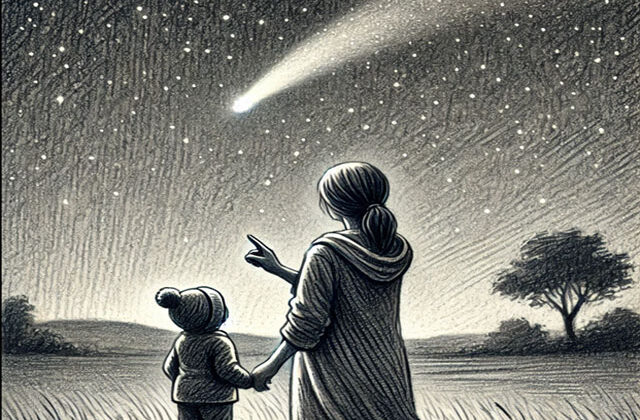EDUCATIONAL PSYCHOLOGIST – 35

INDONESIA
Hope you all were able to check which cognitive distortions you mostly use and pause to check with facts and reality. Quickly going through what is the meaning of catastrophizing – overestimating the likelihood or consequences of our worst fears. It’s common reaction to uncertain situations. Our brains see unknown situations as danger, that is why if we fail in a test the brain turns into a message of us dropping out of school. In ancient days, our ancestors are made to survive in the wild, so our brains are designed to expect the worst. That’s why our primitive parts of our brains take a “better safe than sorry” approach to uncertainties, both small and big.
Let’s consider an analogy, in modern times, your brain can be considered as smoke detector. Imagine you are working from home, you hear the smoke alarm, what is your initial reaction?
- Aah! I forgot to take my toast off out of the oven.
- The house is on fire.
In our everyday life, uncertainties are like smoke. Your role is to find out whether the problem is burnt toast, a house fire, or just a false alarm, and respond accordingly.
Believe it or not, many of us struggle with this a lot. Catastophizing is mostly common in teenagers and young adults. This is because most uncertain of ones lives happen during the ages 13 and 35. It’s the time we are picking our courses, pathways to schools and universities, selecting college majors, graduating from colleges, getting our first jobs, perhaps even living on our own. Furthermore, research shows that, in our 20s, the prefontal cortex or the part of our brains that solves problems during uncertain times are still developing. It does not mean the young adults can’t cope with uncertainties, rather it is the time to hardwire new habits, such as pausing and living in the present. Let’s take my personal exam, every time before the exam, my teenage daughter would spiral down, telling she would fail in the subject and been kicked out of that particular course by the teacher. She would come and ask me to write a note to teacher and principal that she is sick and can’t attend the exams.
“Let’s try decatastrophizing first,” I said.
I will discuss few strategies with her, as there is no one size fits all. Please if you find yourself in a similar situation, choose what works for you.
- Stop time travelling – most of our worries and fears are about the future. For my daughter, it was failing her exam or her course completely and being kicked out. But being in next month or next year is not going to solve today’s problem. Instead, take a deep breath, feel your feet on the ground and stay right where you are.
- Focus on what is – part of staying in the present is not focusing on “what if” but on “what is.” Catastrophizing is based on fears rather on facts. So go back and check the facts, I would ask my daughter have you ever failed a test? Have you ever been kicked out of the course by the teacher? I would give examples, such as last time she predicted she would fail in her science summative, then she not only passed but got a A*. What would happen if she fails, she has to work really hard for the next exams to keep up the grades. I said the worst case would be if she fails she needs to work more hard for the others, she said, “No, the teacher would ask me to change the course.”
- Play out your worst case scenario – My daughter and I discussed, in case if the teacher asks you to change the course, what would she do? I will take another science course which I’m interested in, which isn’t planned but sometimes it is better to study the subject which you are passionate about,” she chuckled. Even if my daughter’s worst case scenario works out, life will carry on.
- Play out your best case scenario – Then I asked my daughter to share the best case scenario making it as much as dramatic and extreme as the worst case scenario. She laughed and shared about being the best student for the Science subject and collecting award while her classmates giving standing avation. We both shared a laugh, and realized that both her best case and worst case scenarios are child like fantasies. Reality is always midpath.
- Go Grey – Catastrophizing is a form of black and white thinking, with the focus on black. When we are young, in teenage, it’s easier to fixate on one or the other. But the trick is to hang out somewhere in the midway. I discussed how I as a student struggled through my High School, and there is more than one way to success.
- Get more data points – The real medicine for catastrophizing is confidence, and it comes only by experience. What my daughter needed is not a sick letter, instead she needs evidence to believe that she belong where she is. With every test she passes her confidence will boost up. It is normal to feel anxious before a big test. In those moments, she needed a reminder of tests she did well.
I told her all she needed is some of practice, encouraged her to go to a quiet space and study for a while or just sleep in early, go tomorrow with a fresh mind.
Of course, my smoke detector was going off, worrying whether she will fail the test and come in ranting again for the whole change of courses or even worse, she would do some self-harm. But based on our conversations, and research I was confident she will pass the exam with flying colors.
In the evening, she came home with a smile on the face, saying she did well and “all that catastrophizing was for nothing.” I suggested, maybe it wasn’t for nothing, she’d learned something that would help her next time.
Citation – Jay.M,(2022). What to do when your mind dwells on the worst-case scenario. Harward Bussiness review. =






